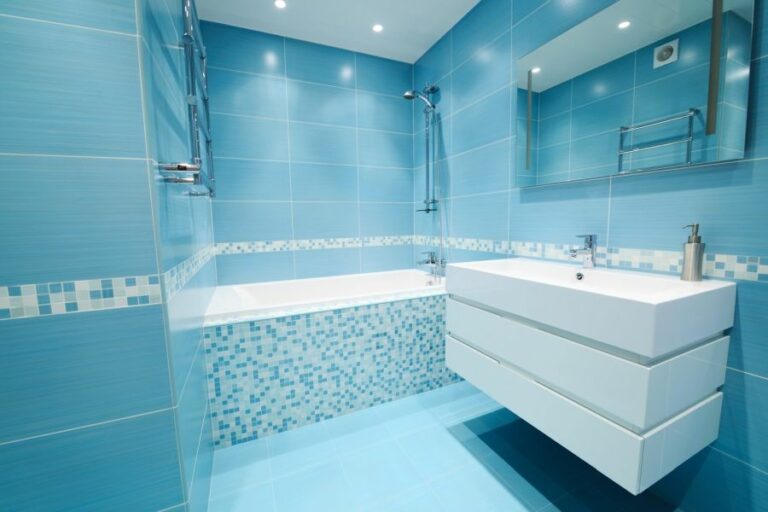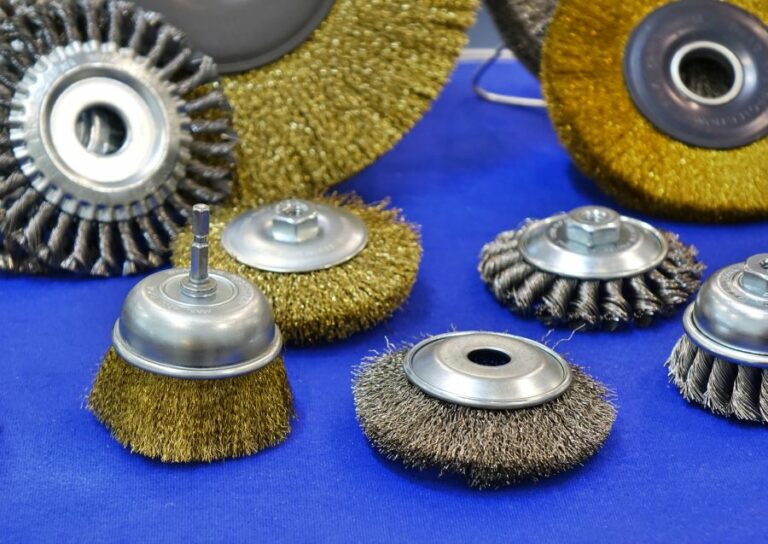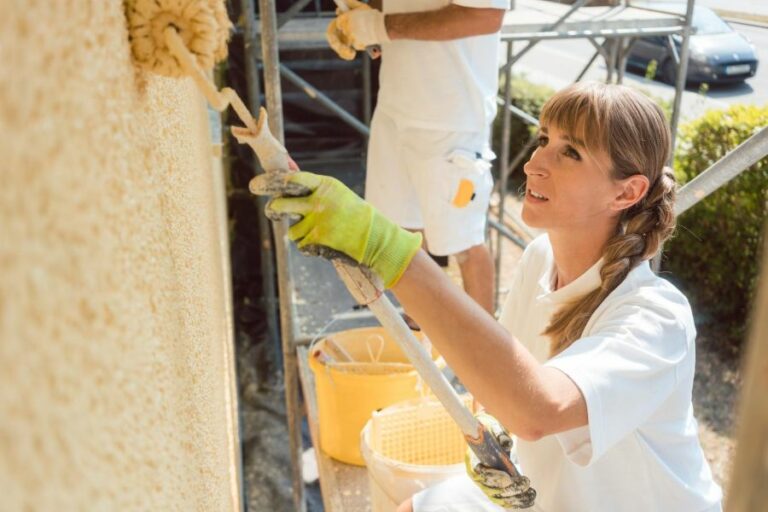Wire Brushes For Effective Dirt Removal. What Pros Say
Are you tired of scrubbing endlessly at stubborn dirt and grime that just refuses to budge? Well, you’re certainly not alone in this quest for cleanliness, and fortunately, we have a tried-and-true solution for you. Wire brushes are a key tool when it comes to effective dirt removal and has been used for years to successfully tackle even the toughest cleaning jobs.
Wire brushes for effective dirt removal:
Wire brushes are essential cleaning tools that efficiently remove dirt, rust, paint, and other materials from surfaces. They come in various types, including crimped, knot, end, and wheel wire brushes, each with its specific uses. Key factors for selecting a wire brush involve material, size, shape, and bristle diameter. To ensure effective dirt removal, follow safety precautions, apply appropriate pressure, match brush speed, clean the brush regularly, and replace it when worn.

Dirt, grime, and stubborn stains – meet your match! Learn how wire brushes can help you tackle the toughest cleaning tasks with ease. Discover their various uses, materials, and application tips. Read on to become a cleaning pro!
Contents
- 1 Efficient Dirt Elimination with Wire Brushes
- 2 Is Dirt Removal Possible with a Wire Brush?
- 3 Exploring Dirt-Removing Brush Varieties
- 4 Choosing the Right Wire Brush for Flat Surface Cleaning
- 5 Selecting the Ideal Wire Brush for Your Needs
Efficient Dirt Elimination with Wire Brushes
Wire brushes are an essential tool in any cleaning arsenal. They offer a practical and efficient way to remove dirt, rust, paint, and other unwanted materials from surfaces quickly and easily.
• Types of Wire Brushes
– Crimped Wire Brushes
Crimped wire brushes are made with wavy or crimped steel wires. The crimping process creates small pockets in the wire bristles, allowing dirt and debris to be trapped and removed efficiently.
These brushes are ideal for light to medium cleaning tasks, such as removing rust, paint, and dirt from metal surfaces.
– Knot Wire Brushes
Knot wire brushes are made by twisting wire strands together to form a knot or bundle.
These brushes are more aggressive than crimped wire brushes and are excellent for heavy-duty cleaning tasks, such as removing thick layers of rust, scale, or paint. Knot wire brushes are also preferred for cleaning weld seams and deburring edges.
– End Wire Brushes
End wire brushes feature wire bristles arranged around the end of a mandrel or shaft. These brushes are excellent for cleaning small, inaccessible areas and tight spaces, such as pipes, tubes, and cylinders. They are available in both crimped and knot wire styles.
– Wheel Wire Brushes
Wheel wire brushes, as the name suggests, are circular in shape and designed for use with angle grinders, bench grinders, or other rotating tools. They are suitable for cleaning large surfaces and can remove dirt, rust, paint, and scale quickly and efficiently.
• Selecting the Right Wire Brush
When choosing a wire brush for effective dirt removal, consider the following factors:
– Material
Wire brushes come in various materials, with the most common being steel, brass, and stainless steel. Choose the appropriate material based on the surface you are cleaning:
- Steel: Suitable for cleaning most metal surfaces, including iron, steel, and aluminum
- Brass: Ideal for cleaning soft metals, such as brass, copper, or bronze, without scratching the surface
- Stainless Steel: Suitable for cleaning stainless steel surfaces without causing contamination or corrosion
– Size and Shape
Select a wire brush size and shape that best fits the surface you are cleaning and the tool you are using. For example, wheel wire brushes are ideal for large, flat surfaces, while end wire brushes work best for tight spaces or small, hard-to-reach areas.
– Bristle Diameter
Choose a wire brush with a suitable bristle diameter based on your cleaning task. Smaller diameter wires are more flexible and suitable for lighter cleaning tasks, while larger diameter wires are more rigid and ideal for heavy-duty cleaning.
• Tips for Effective Dirt Removal with Wire Brushes
Here are some practical tips to help you achieve the best results when using wire brushes for dirt removal:
- Safety First: Always wear safety goggles and gloves when using wire brushes to protect your eyes and hands from flying debris and abrasive materials.
- Apply Appropriate Pressure: Too much pressure can cause wire breakage and reduce the brush’s effectiveness. Apply just enough pressure to allow the brush to do its job without damaging the surface or the brush itself.
- Match Brush Speed to the Task: For rotating wire brushes, using the correct speed is crucial for achieving the best results. Follow the manufacturer’s recommendations for the appropriate RPM (revolutions per minute) for the brush and tool you are using.
- Clean the Brush Regularly: Wire brushes can become clogged with dirt and debris, reducing their effectiveness. Clean your wire brush regularly, either by tapping it against a solid surface or using a wire brush cleaner.
- Replace Worn Brushes: Over time, wire brushes will wear down, and their cleaning ability will diminish. Make sure to replace your wire brush when it becomes worn or damaged to ensure the best cleaning results.
• In Conclusion
Wire brushes are valuable tools for effective dirt removal, and selecting the right one for your needs is crucial for achieving the best results.
By considering factors such as material, size, shape, and bristle diameter and following the tips mentioned above, you can easily ensure that your wire brush removes dirt, rust, and other unwanted materials from surfaces. Happy cleaning!
Is Dirt Removal Possible with a Wire Brush?
A wire brush is a versatile and effective tool for a wide range of cleaning tasks, including dirt removal.
• Types of Wire Brushes and Their Applications
There are several types of wire brushes available, each designed for specific tasks and surfaces. These include:
– Handheld Wire Brushes
Handheld wire brushes are perhaps the most common type and are ideal for small-scale tasks. They come in a variety of shapes, sizes, and bristle types to suit different applications.
– Wire Wheels and Cup Brushes
Wire wheels and cup brushes are designed for use with power tools, such as angle grinders and drills. These attachments allow for more aggressive cleaning on larger surfaces or in hard-to-reach areas.
– Wire Brushes for Cleaning Machines
Specific wire brushes are designed for use with cleaning machines, such as floor scrubbers and pressure washers. These brushes are ideal for removing dirt from large areas or on surfaces that require frequent cleaning.
• The Process of Removing Dirt with a Wire Brush
When it comes to dirt removal, a wire brush can be an excellent tool for a range of surfaces and materials. Here are some tips and recommendations for using a wire brush to remove dirt effectively:
– Choosing the Right Brush
Select a wire brush with the appropriate size and bristle type for the task at hand. For example, a small, handheld brush with brass bristles may be ideal for cleaning dirt from a delicate surface, whereas a wire wheel with stiff steel bristles may be more suitable for heavy-duty dirt removal on tougher surfaces.
– Scraping Off Loose Dirt
Before using a wire brush, use a scraper or a similar tool to remove as much loose dirt as possible. This will make it easier for the wire brush to access and dislodge any remaining dirt.
– Applying Cleaning Solutions
In some cases, a cleaning solution may be necessary to help break down and remove stubborn dirt. Apply the appropriate cleaning solution to the area and let it sit for a few minutes to allow it to work on the dirt.
Ensure that you follow the manufacturer’s guidelines for the safe and effective use of any cleaning products.
– Using the Wire Brush
Begin brushing the surface using a back-and-forth motion, applying pressure as needed. Pay attention to the direction of the brush strokes to ensure consistent and effective dirt removal. It is important to avoid forcing the brush too hard against the surface, as this may cause scratches or damage.
– Rinsing and Drying the Surface
Once the dirt has been removed, rinse the area thoroughly with clean water to remove any remaining cleaning solution and dislodged dirt. Dry the surface promptly to prevent the formation of mildew or other issues caused by excess moisture.
• Safety Precautions When Using a Wire Brush
While a wire brush can be highly effective for dirt removal, it is crucial to keep safety in mind when using this tool. Here are some safety precautions to follow:
- Always wear appropriate personal protective equipment, such as safety goggles and gloves, to protect yourself from flying debris and chemical exposure.
- Ensure proper ventilation when working with cleaning solutions to avoid inhaling potentially harmful fumes.
- Be cautious when using power tools with wire brush attachments, as the high-speed rotation may increase the risk of injury.
- Regularly inspect your wire brush for signs of wear and replace it as necessary to ensure optimal performance and safety.
• Conclusion
In summary, a wire brush can be an effective tool for removing dirt from various surfaces and materials. By selecting the appropriate type of brush, using an efficient method, and following safety precautions, you can achieve impressive dirt removal results with relative ease.
Exploring Dirt-Removing Brush Varieties
Cleaning is an essential everyday task, and using the right brushes can make all the difference in efficiency and results.
• Natural Bristle Brushes
Natural bristle brushes are made from animal hair, such as boar or horsehair. These brushes have excellent flexibility and durability, making them suitable for various surfaces, including delicate materials like fine fabrics and sensitive surfaces.
However, they don’t perform as well in wet conditions or with harsh chemicals.
– Soft Horsehair Brushes
Horsehair brushes have soft, gentle bristles that effectively remove dirt from delicate surfaces without causing damage. They are ideal for dusting and cleaning fragile items, such as antiques and paintings.
Conservation experts at the Smithsonian Institution recommend using soft-haired brushes, like those made from horsehair, for cleaning dust off artifacts and artwork.
– Boar Bristle Brushes
Boar bristle brushes are more robust than horsehair brushes and work well for cleaning rougher surfaces. Their superior stiffness makes them excellent for vigorously removing dirt and debris on outdoor surfaces like patios and decks.
• Synthetic Bristle Brushes
Synthetic bristle brushes are made from materials like nylon and polyester and are more consistent than natural bristle brushes. They work well with water-based cleaning solutions and can handle a variety of surfaces.
– Nylon Bristle Brushes
Nylon brushes are known for their excellent durability and medium stiffness. They’re suitable for damp and wet conditions, making them ideal for cleaning bathroom tiles, kitchen counters, and other areas that require water-based cleaning solutions.
Nylon brushes are also less likely to scratch surfaces than other, less flexible synthetic brushes.
– Polyester Bristle Brushes
Polyester brushes are more resistant to chemicals and solvents than nylon brushes, which makes them suitable for cleaning surfaces that need heavy-duty cleaning agents. Though polyester isn’t as flexible as nylon, these brushes work well for removing dirt from areas like garage floors and outdoor furniture.
• Wire Brushes
Wire brushes are designed to remove stubborn dirt, rust, and paint. They’re made from metal wires, such as brass, steel, or bronze, and are often used on hard surfaces that can withstand abrasive cleaning methods.
– Brass Wire Brushes
Brass wire brushes are soft and flexible, making them safe for use on surfaces that may scratch easily, such as copper, brass, or aluminum. These brushes effectively remove dirt and light rust without damaging the polished surface.
– Steel Wire Brushes
Steel wire brushes are more rigid than brass brushes and are suitable for removing heavy rust, corrosion, or paint from strong surfaces like iron and steel. Be cautious when using steel wire brushes, as they can cause scratches on softer materials.
For successful results, apply gentle pressure and work in a consistent direction to prevent surface damage.
– Bronze Wire Brushes
Bronze wire brushes are a happy medium between brass and steel wire brushes. They’re more rigid than brass brushes but not as harsh as steel brushes. Bronze wire brushes work best on surfaces like stainless steel, as they’re effective at removing dirt and debris without causing surface scratches.
• Specialty Brushes
Some brushes are designed for specific cleaning tasks and surfaces. These specialty brushes often have features that make them uniquely suited to their intended purpose.
– Grout Brushes
Grout brushes are tailored for cleaning grout lines between tiles. They have narrow, stiff bristles that can penetrate small spaces and efficiently remove dirt and mildew.
– Bottle Brushes
Bottle brushes are designed to clean the inside of bottles, jars, and other narrow containers. They have long, flexible handles and bristles that curve around the interior surfaces to remove dirt and residue.
– Vent Brushes
Vent brushes are specialized for cleaning vents, ducts, and other tight spaces. Often featuring a long handle and flexible bristles, these brushes can effectively remove dirt and debris from difficult-to-reach areas without causing damage to sensitive components.
• Conclusion
Selecting the appropriate brush for a specific surface or cleaning task can significantly enhance the effectiveness of your cleaning efforts. By familiarizing yourself with the various types of brushes and their applications, you’ll be well-equipped to maintain a clean and healthy environment.
Remember to always test a small, inconspicuous area of the surface before using any brush to ensure that it won’t cause damage.
Type of Brush | Usage |
|---|---|
Scrub brush | Used for cleaning various surfaces and removing dirt, grime, or stains |
Wire brush | Used for removing rust and paint from metal surfaces |
Bristle brush | Used for cleaning delicate surfaces and everyday dusting |
Utility brush | Used for general cleaning purposes on various types of surfaces |
Toothbrush | Used for cleaning small or tight spaces, such as grout lines or crevices |
Push broom | Used for sweeping large areas, such as floors or walkways |
Hand broom | Used for cleaning smaller areas, such as countertops or tabletops |
Choosing the Right Wire Brush for Flat Surface Cleaning
Cleaning flat surfaces can be a tough task without the proper tools. One of the most effective tools for this job is a wire brush. A wire brush is a versatile cleaning tool that can effectively remove dirt, rust, paint, and other unwanted materials from surfaces.
However, not all wire brushes are suitable for every surface or application. It is essential to select the appropriate type of wire brush to ensure the best results and avoid damaging the surface being cleaned.
• Wire Brush Material Types
Wire brushes come in various materials, and the type of material determines the brush’s effectiveness on different surfaces. Below are the common types of wire brush materials:
– Steel Wire Brushes
Steel wire brushes are strong and durable, making them suitable for heavy-duty cleaning tasks such as rust and paint removal. These brushes are effective on hard surfaces, including metal surfaces and machine parts.
However, steel wire brushes might be too abrasive for delicate surfaces, as they can cause scratches and damage to the surface.
– Brass Wire Brushes
Brass wire brushes are softer than steel wire brushes, making them suitable for cleaning softer materials, such as aluminum, brass, and copper, without damaging them. These brushes can effectively remove dirt, grime, and various surface contaminants without being too abrasive.
Brass wire brushes are also non-sparking, making them suitable for use in environments with flammable materials.
– Stainless Steel Wire Brushes
Stainless steel wire brushes are similar in strength to steel wire brushes, but they are more resistant to rust and corrosion. They are suitable for cleaning stainless steel and other non-ferrous metals and provide excellent results in wet environments.
Stainless steel wire brushes are also more resistant to chemicals, making them suitable for cleaning surfaces exposed to harsh chemicals.
– Nylon Wire Brushes
Nylon wire brushes are the softest of all wire brushes and are suitable for delicate and sensitive surfaces, such as plastic, glass, and softwood. These brushes can effectively remove light dirt and dust without causing any damage to the surface.
Nylon wire brushes are also resistant to chemicals, making them suitable for cleaning surfaces exposed to harmful substances.
• Wire Brush Styles for Flat Surface Cleaning
Wire brushes come in various styles, each designed for specific tasks and applications. Below are the common wire brush styles suitable for cleaning flat surfaces:
– Handheld Wire Brushes
Handheld wire brushes are the most common and versatile type of wire brushes. They feature a handle and a brush head with bristles arranged in rows.
Handheld wire brushes are adaptable and can be used for various surface cleaning tasks, including rust removal, paint stripping, and scrubbing away dirt and grime. Handheld wire brushes allow for better control and precision, making them suitable for cleaning smaller flat surfaces and tight spaces.
– Wheel Wire Brushes
Wheel wire brushes are designed for use with power tools such as drills and angle grinders. They feature a wheel-like shape with bristles arranged along the circumference.
Wheel wire brushes are ideal for aggressive cleaning tasks and are best suited for large flat surfaces, such as floors, walls, and metal plates. They provide high-speed, powerful cleaning action, allowing for quick and efficient removal of unwanted materials from the surface.
– End Wire Brushes
End wire brushes, also known as tube or valve brushes, have a cylindrical shape with bristles extending from one end. They are designed for cleaning inside pipes, tubes, and other round or curved surfaces.
While they may not be the most suitable option for cleaning flat surfaces, their unique shape allows them to be used in tight spaces and corners where other styles may not be ideal.
• Conclusion
When selecting a wire brush for cleaning a flat surface, consider the material and style of the brush that best suits your surface and requirements.
Steel and stainless steel wire brushes are suitable for heavy-duty cleaning tasks on hard surfaces, while brass and nylon wire brushes are ideal for softer surfaces and delicate materials.
Handheld wire brushes offer versatility and precision for various cleaning tasks, while wheel wire brushes provide powerful action for large surfaces and high-speed cleaning.
Always ensure you choose the appropriate wire brush material and style to achieve the best results and maintain the integrity of the surface being cleaned.
Type of Wire Brush | Application | Advantages |
|---|---|---|
Stainless Steel Wire Brush | For non-rusting surfaces; compatible with metal, wood, or plastic surfaces | Resistant to rust and corrosion, strong and durable, less likely to scratch surfaces |
Brass Wire Brush | For soft metals, wood, and other delicate materials | Gentler than steel brushes, will not scratch surfaces easily, works well on softer materials |
Nylon Wire Brush | For sensitive or easily-scratched surfaces such as glass, tile, or stainless steel | Causes minimal surface damage, very gentle and suitable for delicate surfaces |
Selecting the Ideal Wire Brush for Your Needs
Wire brushes are versatile tools commonly used for cleaning, deburring, and surface finishing tasks. With numerous types, sizes, and bristle materials available, it’s essential to select the right brush for the job you’re working on.
• Types of Wire Brushes
There are four main types of wire brushes, each designed for specific purposes:
– Handheld Wire Brushes
Handheld wire brushes are useful for cleaning surface contaminants, rust, and paint. They are portable and designed for manual use, allowing you to apply pressure and control the direction of the bristles.
- Suitable for: concrete, metal surfaces, grills, gardening tools
– Mounted Wheel Brushes
Mounted wheel brushes can be affixed onto electric drills, grinders, or bench grinders, providing a more powered approach for material removal and surface finishing. Their rotating motion ensures fast and uniform results.
- Suitable for: deburring, paint removal, edge blending, rust removal
– Cup Brushes
Cup brushes attach to angle grinders or handheld drills and cover a larger surface area than mounted wheel brushes. They are useful for aggressive cleaning and rough material removal.
- Suitable for: large metal surfaces, welding or soldering preparations, patio furniture
– End Brushes
End brushes are designed for cleaning tight spaces or intricate surfaces. They attach to electric drills or die grinders, providing precise control over the areas you clean.
- Suitable for: moldings, automotive parts, pipes, valves
• Bristle Material: The Key to Success
The type and size of the wire brush depend on the material you are working with and the desired result. Primary wire brush materials include:
– Steel Wire
Steel wire brushes are durable, aggressive, and versatile. They can tackle heavy-duty jobs like rust, paint, and weld scale removal. However, they may scratch or gauge softer materials.
- Recommended for: mild and stainless steel, iron, and hard plastics
– Stainless Steel Wire
Stainless steel wire brushes have non-rusting properties, making them suitable for use on corrosion-sensitive materials like aluminum and stainless steel. They are ideal for surface finishing tasks, particularly in marine or high-humidity applications.
- Recommended for: aluminum, stainless steel, brass
– Brass Wire
Brass wire brushes offer a softer alternative to steel brushes, protecting the workpiece from scratches, damage, or surface gouging during cleaning or surface finishing tasks. They work well on softer materials like brass, copper, or wood.
- Recommended for: brass, copper, bronze, gold, wood, plastic
– Nylon Abrasive
Nylon abrasive brushes provide a gentle and non-metallic solution for cleaning, deburring, and finishing applications. The abrasive grit is embedded in the nylon material, ensuring even contact with surfaces and minimal damage.
- Recommended for: aluminum, copper, brass, wood, plastic, glass, ceramics
• Filament and Brush Sizes
Choosing the right filament size and brush diameter is essential for efficient brush performance. For wire brushes, thicker filaments provide more aggression and better resistance to wear and tear, while thinner filaments maintain their flexibility, enabling you to access tight spaces.
In general, select thicker filaments for coarse material removal and thinner filaments for fine surface finishing.
Similarly, consider the brush size and diameter according to the surface area you need to cover. Large brushes speed up cleaning on broader surfaces, while smaller brushes enable precision work in tight spaces.
• Safety Guidelines for Wire Brush Use
When using wire brushes, adhering to safety guidelines can prevent injuries:
- Always wear eye protection.
- Use brushes rated for the tool’s maximum RPM.
- Secure the workpiece before brushing.
- Ensure the brush is properly mounted on the power tool.
• In Conclusion
Choosing the right wire brush is essential for efficient and safe material removal or surface finishing tasks. By considering the brush type, bristle material, filament size, and brush diameter, you can select the most appropriate tool for your project.
Follow the provided recommendations and safety guidelines for successful wire brushing experiences.







